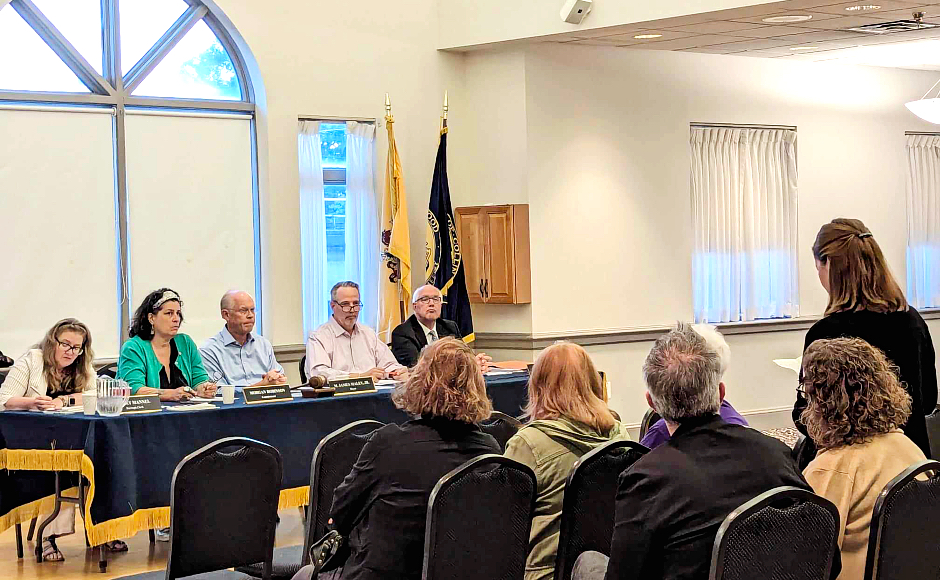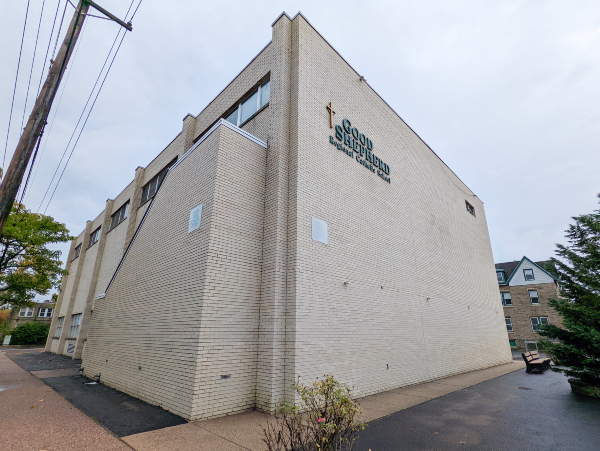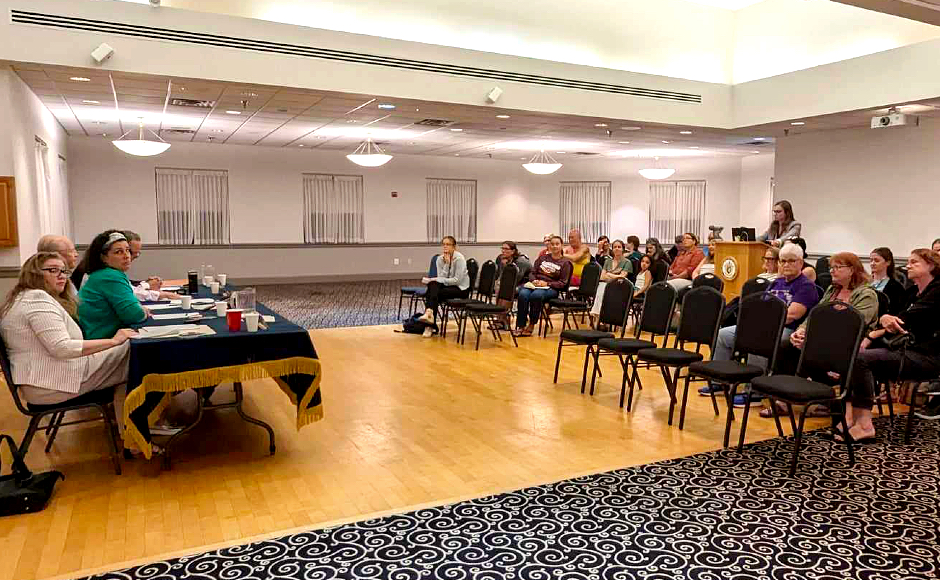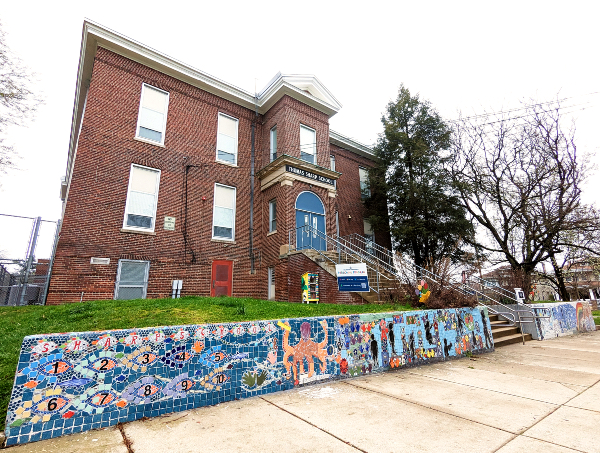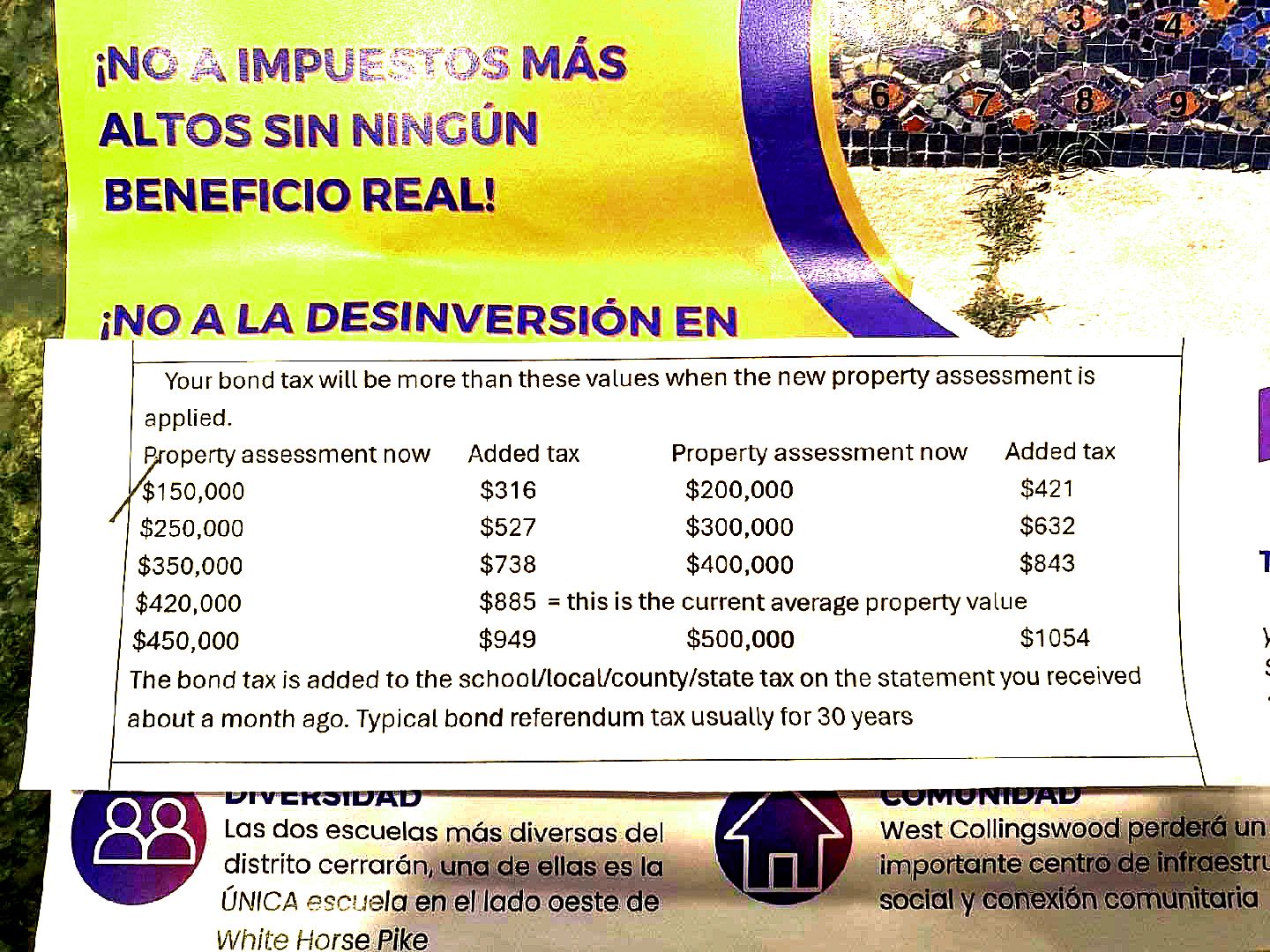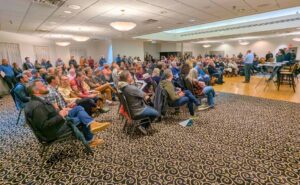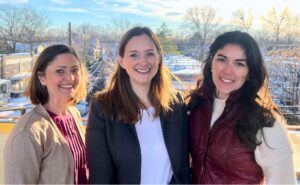In less than two weeks, Collingswood voters will head to the polls in a special election to decide whether to authorize some $44.5 million in facilities improvements for the local public school district.
Discussion of the issue has been heated, with emotional distress at the prospect of closing two neighborhood elementary schools, or the messaging around it, dominating public conversations about the merits of the proposal.
Even local elected officials have waded into the fray, with voters seeking out the individual opinions of borough Commissioners Rob Lewandowski, Morgan Robinson, and Mayor Jim Maley at the September meeting of the Collingswood municipal government.
In July, the commissioners wrote to the Board of Education (BOE) to ask its members to forego the vote on facilities funding in favor of an operational referendum that would stabilize district payroll. In exchange, the borough would buy Good Shepherd Regional Catholic School, and hold it for the district to acquire at a date to be determined.
The central issue, the commissioners said, was related to the BOE process of forming and presenting the referendum to the public, of which they were deeply critical.
“We fear that an election result, regardless of the outcome, will only deepen the divisions and continue to hinder our common goals,” Maley wrote in that letter.
On behalf of the district, Collingswood BOE President Regan Kaiden replied in writing: “We do not believe that delaying a vote on an investment in our school facilities will ‘solve’ the problem of division.
“Instead, a democratic process — a vote — will empower our community to tell its elected officials what they want for their children and their schools,” Kaiden wrote. “We look forward to hearing from our community on September 17.”
In rejecting the commissioners’ proposal, the BOE counter-offer, which Maley described Tuesday as “not a serious response,” comprised a handful of significant issues with which the district could use the help of the municipal government.
Those included: acquiring and helping to redevelop James A. Garfield Elementary School, providing courtesy shuttles for families displaced by the school closures, and helping redevelop Thomas A. Sharp Elementary School as a community center.
That response was hand-delivered to the mayor at a July 11 in-person meeting with the BOE ad hoc facilities committee and Superintendent of Schools Fredrick McDowell. By the recollections of those present at the meeting, it pretty well derailed the conversation that was to have taken place that day before it began.
On Tuesday, the borough commissioners restated their individual objections to the way the district has conducted its referendum outreach in general, while residents probed members of the governing body about their own responses.
“We know you’re a no; you have a ‘no’ sign,” Collingswood resident Erica Schmid asked Maley. “You do realize that your position as mayor is a lot more powerful than my yes. Why are you a no?”
“Really because the process has been more than awful,” Maley responded.
“Nobody seems to disagree with the goals, but you can’t come out and say we’re closing two neighborhood schools on a bond referendum that’s the biggest this town has ever done and just come out, boom, with a plan; it’s done without any community input,” the mayor said.
“When I was informed that this referendum was happening, which was probably February of this year, [or] March, that was the first I had heard of it,” he continued. “I keep track of these things. I’m really aware of things that are going on.
“If that’s the first time I heard about it, I can guarantee you that the majority of people in this town never heard anything about it,” Maley said.
“Our push was, we’ll take away what we think is the deadline, and then we’ll go through a process.”
(In a prior response to this criticism, McDowell has pointed to community conversations dating back to a September 2022 public meeting as the earliest public presentation on the facilities needs of the district.
When Collingswood resident Meghan Adamoli asked whether the commissioners would be willing to facilitate the sale of Garfield Elementary School, the mayor replied that such considerations were “way ahead of the game,” and that “it would be great to have the school board members here talking about those things.”
“Don’t have a plan for it,” Maley said. “Have not been asked to participate in putting together a plan for that, but would be happy to.”
Collingswood resident Joe Sperlunto countered that the BOE response to the commissioners’ offer to cancel the referendum specifically asked the governing body to help plan for the sale of Garfield Elementary; Maley disagreed.
“We were told what we could do after it passed was buy Garfield, pay for all the transportation for all the students that would be affected, and redo the fields,” he said. “That is not an ask.”
Maley and Lewandowski both expressed frustration that the bond referendum includes a proposal to revive district athletic fields, an initiative on which the borough and district had been collaborating through a recreational master plan visioning process.
The borough had previously spoken about leveraging PILOT payments to cover those costs, and with a handful of planned redevelopment projects upcoming — on Woodlawn Avenue and by the borough water tower, among others — anticipated generating some revenues to put towards that end.
“I was surprised that they were going to bond referendum including the fields,” Lewandowski said. “That kind of pre-empted stuff.”
“That was the reason why, a couple years ago, the borough started the rec plan,” Maley said. “We met with the school board and said, ‘We’re doing this, we want you to be a part of it. We’re more than happy to talk about it.’ We thought we were.
“The goal was, how do we engage in a way that doesn’t end up with… there’s just all this fighting going on,” the mayor said.
Robinson said she believed the borough’s proposal “would have bought time for better communication, more structured delivery, and better planning in general.”
Robinson, who said she’d remained after the July 11 meeting devolved to speak with the BOE ad hoc committee and the superintendent, said she is “not opposed” to the bond question.
“I strongly disagree with the method, and the communication was not done well in any way,” she said. “But for me personally, the goals are important enough that I can move past the delivery or lack of delivery of information.”
Lewandowski, who said only that he “will be voting,” didn’t speculate on the outcome of the vote or any subsequent decisions that it would potentially trigger.
“What happens after that, part of me wants to wait and see,” he said. “The facts will establish what happens next.”
Lewandowski did, however, ask open-endedly whether the district has a structural financial deficit — which the school district has previously confirmed — and if “… the schools have enough money to do what they want to do.
“Does a capital solution — $45 million to change what our schools look like — is that the best thing to do to serve our students?” Lewandowski said. “Or are we looking at a structural deficit to bring in more teachers, to serve our students; more counselors, more a lot of things?
“Is $45 million going to solve problems in academic achievement?” he continued. “I think it’s a good question about the budget. I just don’t think we’re asking the right question.”
Collingswood resident Rebecca Finkel asked whether Maley’s opposition to the bond referendum, which included a $275 contribution to Protect Colls Schools, the political committee organized against the measure, implied his endorsement of messaging used in that campaign.
Finkel later provided a printed mailer she’d received, to which a separate document was stapled. It presented an inflated rundown of anticipated tax increases associated with the referendum as well as misinformation about the tax revaluation underway in Collingswood and average residential property values in the borough.
“This organization has distributed printed materials that misrepresent the impact of the referendum by conflating property values with assessed values,” Finkel said. She asked Maley, “Are you aware?”
(After the meeting, Protect Colls Schools treasurer Lindsay Oster said that her group hadn’t seen the item Finkel referenced before it was posted online, and denied that the group had created it.
(“We made an effort to try and locate who among our supporters might have distributed the papers with no success,” Oster said. “We are also actively reviewing whether the stapled portion has been sent to other members of the community, but it seems to have a very limited distribution pool.
(“No one who is officially involved in our campaign created or distributed the piece of paper stapled to our color-printed handout,” she said.)
On Tuesday night, the mayor’s response suggested that any such tactics, however they emerge, are par for the course politically, even in the run-up to a local bond referendum.
“It’s a campaign; you run a campaign, that’s what you’re doing,” Maley said. “There’s misinformation that happens in those, and you just make your arguments, and you work to convince people, and that’s how it goes. No one gets strung up if there’s any misinformation.”
“I think we all just have to understand that this is how democracy works,” Lewandowski added. “Jim Maley doesn’t really matter to this. I don’t matter; Morgan doesn’t matter. Two-hundred-seventy-five dollars isn’t going to run a campaign.
“What’s important here is going to be to define the problem and the solution,” he said. “Ultimately, it’s not about us, it’s not about the school board, it’s about you and the problem that’s out there. The solution that’s being recommended, is it worth it?”

